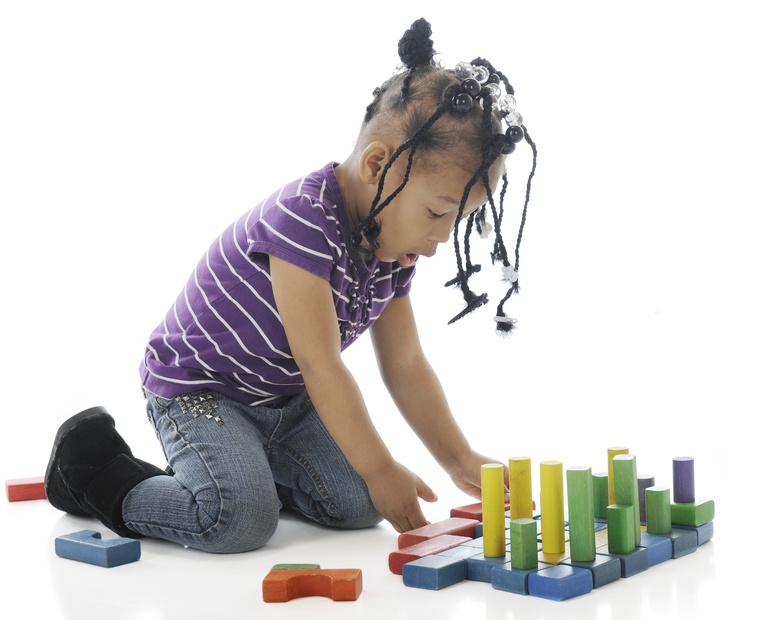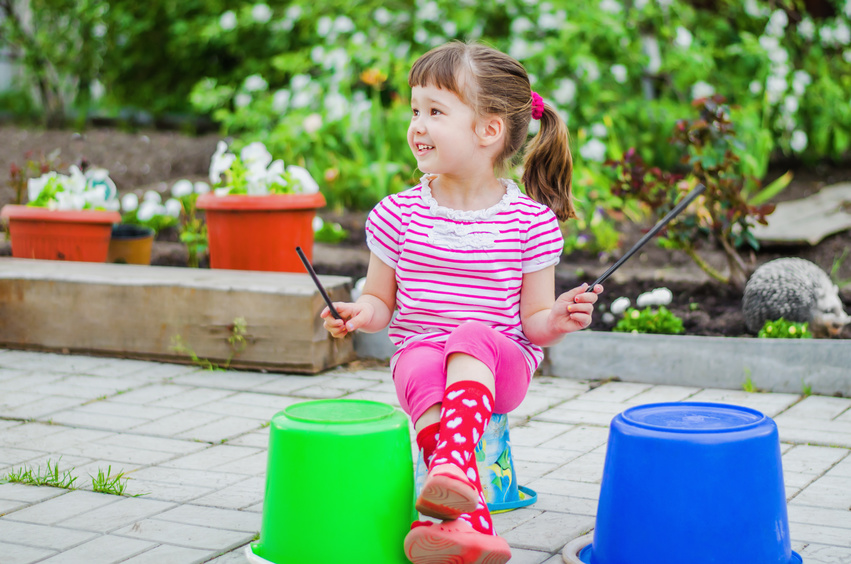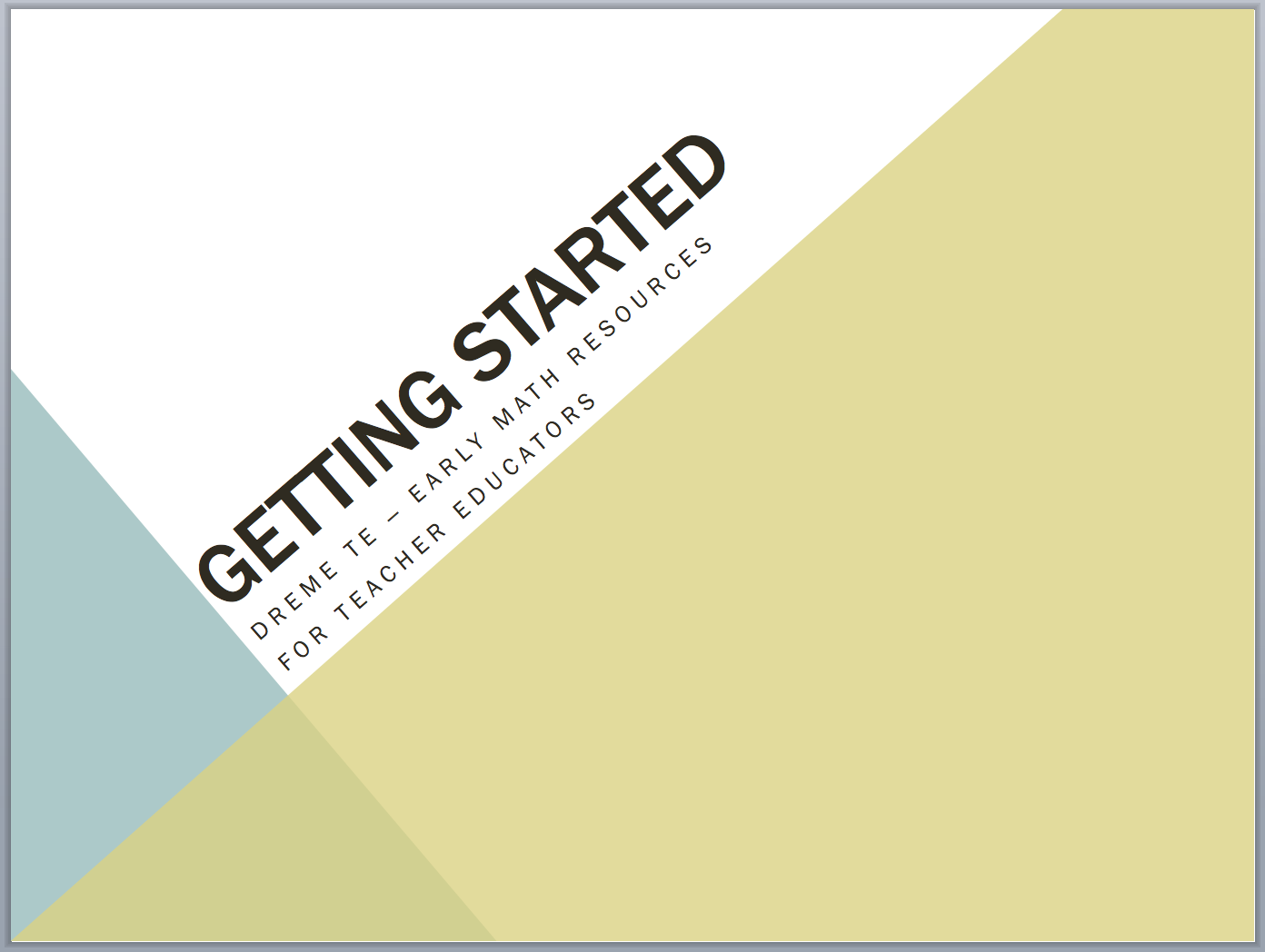An accessible overview of the mathematics of geometry and spatial relations. This article contextualizes this mathematics in children’s everyday lives and then provides a clear account of key concepts. One key concept is the understanding of basic attributes of shape, for example that rectangles must have four sides with right angles, and that squares are one type of rectangle. Another set of ideas involves transformations, such as rotating a square to stand on one of its “pointy” vertices and it remaining a square. This resource presents the ideas of shape and space that emerge and can be developed in preschool.
So, what is geometry?
The domain of geometry—the mathematics of shape and space—has long been a neglected younger sibling of number and operations in the family of mathematics. We pay attention to it, but frequently in a desultory and sporadic way (e.g., “Let’s cut the cheese into triangles for the math activity today”). We ask children to identify stereotypical shapes and we use terms like on top of and under in circle time and book reading. One could argue that not only are we underestimating the considerable contributions that geometric thinking makes in a child's life now and in the future, but we are also underestimating children’s interest in a fascinating world of shape and space, a world full of interesting ideas and applications.
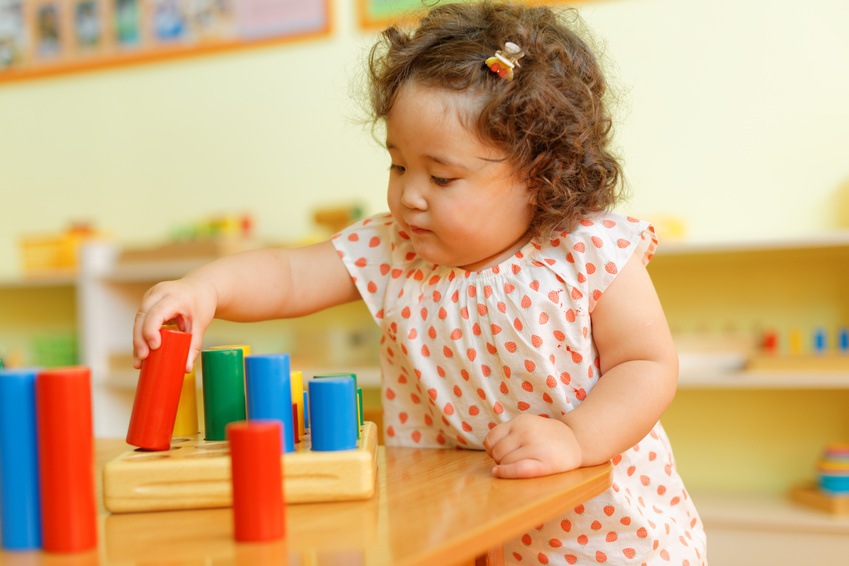 Children interact with their environments even before they are born. They move and rotate in space and manipulate at both fine and gross motor levels. Later, movement and perception are based on children’s estimations of size, shape and distance (grabbing for the shapes going by in a crib mobile), height and width (pulling up on the couch and taking sliding steps along its edge), and the relationship between themselves and objects (“Hmmm… when I push the Cheerios off my highchair, they fall and make a cool design on the floor!”). All of these early interactions with objects involve basic ideas of shape and space.
Children interact with their environments even before they are born. They move and rotate in space and manipulate at both fine and gross motor levels. Later, movement and perception are based on children’s estimations of size, shape and distance (grabbing for the shapes going by in a crib mobile), height and width (pulling up on the couch and taking sliding steps along its edge), and the relationship between themselves and objects (“Hmmm… when I push the Cheerios off my highchair, they fall and make a cool design on the floor!”). All of these early interactions with objects involve basic ideas of shape and space.
Geometric thinking provides tools for understanding physical attributes of the space we inhabit and the things within it. Children use geometric thinking to solve problems through manipulation (both mental and real) of objects and representations of those objects in their environments. In the process, they notice important geometrical patterns and relationships. These next sections describe important aspects of the mathematics of shape and space.
The Vocabulary of Shape and Space
In order to adequately support children’s learning, teachers need to think about fostering both geometric language and concepts. Research has shown that the amount of spatial language that caregivers (e.g., parents, relatives, teachers) use in their interactions with children, and in turn, children’s own use of this vocabulary, helps children categorize objects and spatial relationships based on their perceptions (e.g., on as indicated that an object is supported or attached: “on the table” or “on your jacket”). It also helps them to understand the real world around them. Providing an environment that is rich with spatial vocabulary can call attention to the attributes of objects themselves and their position in space. Spatial language includes words describing location/position (under, in front of), attributes (long, high, side, angle, same, symmetrical), orientation and mental transformation (left, turn, match), and geometric shape names (rectangular prism, triangle, sphere).
Spatial Relations
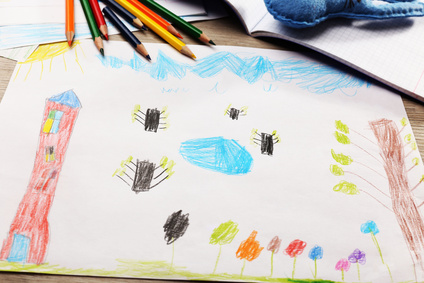 Spatial relations are simply the relationships of objects in space. This includes the relationship of these objects to one another and their relationship to ourselves. As noted in the beginning, an infant's first interactions with the world are explorations of the spatial relationships within its environment. As children gain more experience moving and interacting in a variety of environments, their navigation and manipulation (gross and fine motor) skills improve. Children learn to throw balls through basketball hoops (albeit short ones!), draw pictures of their homes and siblings, and position blocks to create castles.
Spatial relations are simply the relationships of objects in space. This includes the relationship of these objects to one another and their relationship to ourselves. As noted in the beginning, an infant's first interactions with the world are explorations of the spatial relationships within its environment. As children gain more experience moving and interacting in a variety of environments, their navigation and manipulation (gross and fine motor) skills improve. Children learn to throw balls through basketball hoops (albeit short ones!), draw pictures of their homes and siblings, and position blocks to create castles.
Geometric Figures
We do a lot of shape naming in our classrooms. We put shapes on our walls in the form of shape posters; we point them out in the environment (doors, balls); and we ask children to draw them and cut them out. In reality, teaching children the names of shapes is a mixed bag. Children typically learn to recognize prototypical shapes, such as an isosceles triangle pointed up, but they do not learn that shapes are governed by rules (for example, triangles are closed figures with three angles and three straight sides and are triangles regardless of their position; pyramids are named after their bases: triangular bases result in triangular pyramids and square bases result in square pyramids). When we try to teach children these rules we open ourselves to unexpected complexities. Is the window frame really a rectangle? After all, it is a three-dimensional object, not a two-dimensional object. And, are the corners really right angles (generally, after time and a few paint jobs, the corners have a bit of a curve to them!). How do we handle these questions from ourselves and the children we teach? Teachers need to break out the honesty: “This looks like a rectangle to me, but what do rectangles have to have? Does this window frame have all of those attributes?” Imagine what kind of conversations and deep understanding this can support in the classroom. The Geometric Terms and their Definitions handout can help support the teaching of these concepts.
Knowledge of shape attributes contributes to children’s ability to compose shapes (putting two congruent right triangles together to create a rectangle; putting two congruent right triangular prisms together to create a rectangular prism) and to decompose them (the reverse of composition actions). These two abilities further contribute to a child's skills in physical and mental transformations, which is described below.
Physical and Mental Transformations
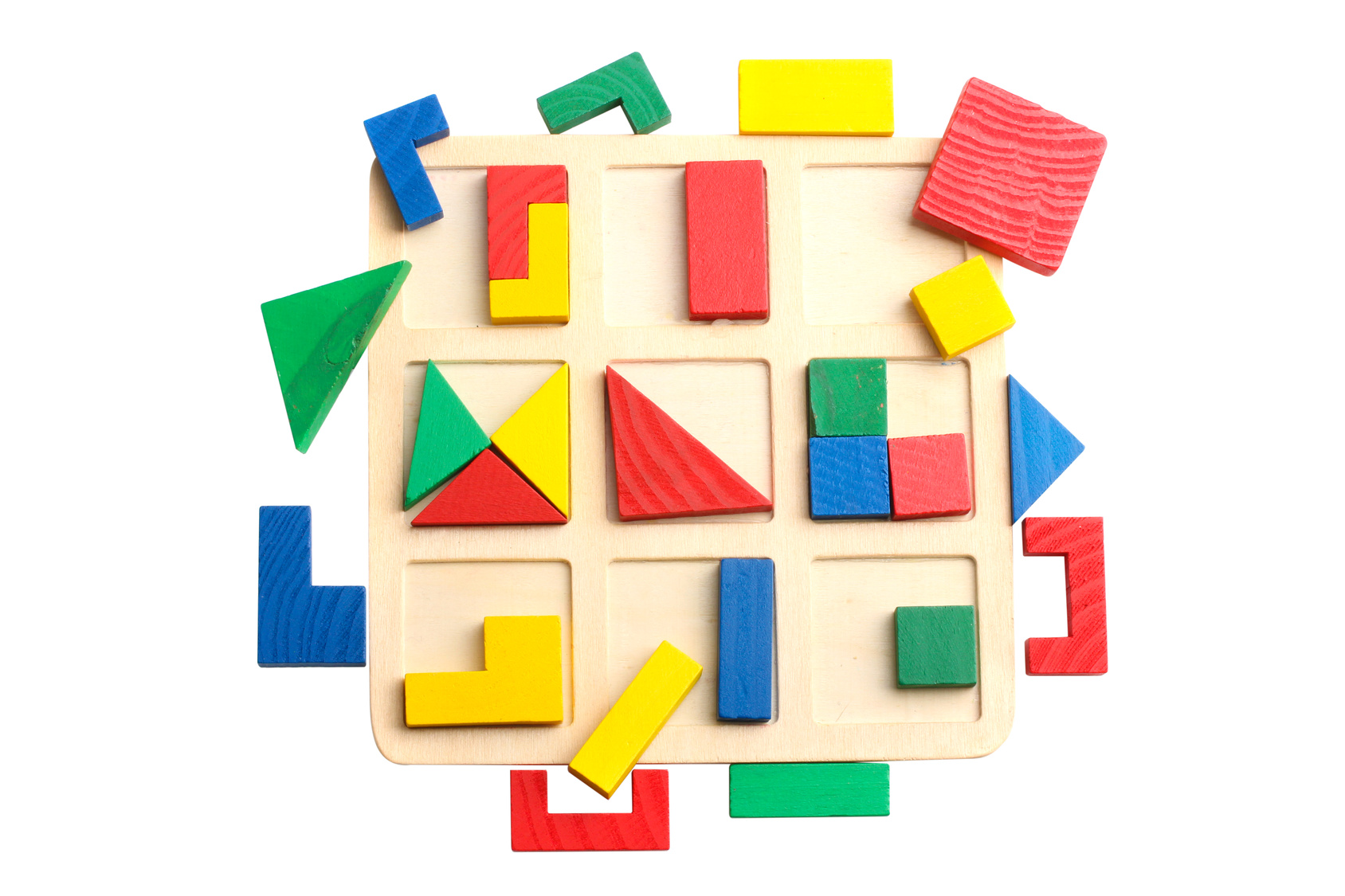 Let's get back to more familiar ground: puzzles. Supporting children’s development in physical and mental transformation has become a hot topic. Recent research has found a strong relationship between these skills in early childhood and mathematics achievement in the fields of science, technology, engineering, and mathematics (STEM). Young children’s manipulations involving composing and decomposing shapes and manipulating puzzle pieces provide opportunities to develop their skills in transforming (sliding, flipping, turning) shapes and objects both in the physical world and mentally. Initially, children might try to fit a puzzle piece by placing it on the place where they think it might go and then turn it until it fits (or doesn’t). Later children can look at puzzle pieces on the table and imagine by rotating pieces in their mind which one can be turned to fit an available spot on the puzzle. Children can do the same thing with tangrams, thinking ahead of time about which shapes might go together in which ways to create a particular figure of a ship or a house, and so on.
Let's get back to more familiar ground: puzzles. Supporting children’s development in physical and mental transformation has become a hot topic. Recent research has found a strong relationship between these skills in early childhood and mathematics achievement in the fields of science, technology, engineering, and mathematics (STEM). Young children’s manipulations involving composing and decomposing shapes and manipulating puzzle pieces provide opportunities to develop their skills in transforming (sliding, flipping, turning) shapes and objects both in the physical world and mentally. Initially, children might try to fit a puzzle piece by placing it on the place where they think it might go and then turn it until it fits (or doesn’t). Later children can look at puzzle pieces on the table and imagine by rotating pieces in their mind which one can be turned to fit an available spot on the puzzle. Children can do the same thing with tangrams, thinking ahead of time about which shapes might go together in which ways to create a particular figure of a ship or a house, and so on.
What comes first?
Unlike learning to read, where knowing letters and letter sounds are important precursors to fluent reading, the geometric and spatial concepts mentioned above are all within a child's reach. There is no “first step.” Teachers should feel free to expose children to all of these ideas, and provide rich language and physical environments that support this important area of development.
Clements, D.H., Swaminathan, S., Hannibal, M.A.Z., & Sarama, J. (1999, March). Young children’s concepts of shape. Journal for Research in Mathematics Education, 30(2), 192–212.
Clements, D.H. (1999). Geometric and spatial thinking in young children. In J.V. Copley (Ed.), Mathematics in the early years (pp. 66–79). Reston, VA: National Council of Teachers of Mathematics.
Ferrara, K., Hirsh-Pasek, K., Newcombe, N. S., Golinkoff, R. M., & Lam, W. S. (2011). Block talk: Spatial language during block play. Mind, Brain, and Education, 5(3), 143-151.
Levine, S. C., Ratliff, K. R, Huttenlocher, J., & Cannon, J. (2012). Early puzzle play: a predictor of preschoolers' spatial transformation skill. Developmental Psychology, 48(2), 530–542. http://dx.doi.org/10.1037/a0025913.
Gunderson, E. A., Ramirez, G., Beilock, S. L., & Levine, S. C. (2012). The relation between spatial skill and early number knowledge: The role of the linear number line. Developmental Psychology, 48(5), 1229-1241. doi:10.1037/a0027433

